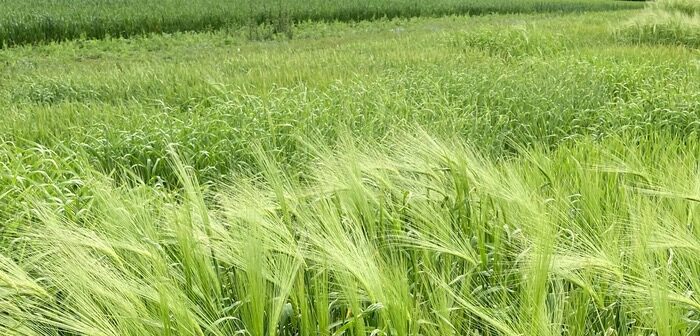Researchers at the James Hutton Institute in Dundee are hoping to unlock the secrets of an ancient barley grown only on Unst, Shetland’s northernmost island.
By learning a state-of-the-art computational method for assembling plant genome sequences, the researchers hope to pinpoint the unique traits of Bere Unst barley so that they could then be used to create higher quality and more productive varieties.
Potentially, this would mean Shetland whisky distillers could add a unique local heritage twist to their whiskies, as well as new flavours of barley. The specific traits of the Bere Unst barley could also mean a new elite variety could be bred to grow on certain marginal soils elsewhere around the world.
The computational methods were learnt on a recent knowledge exchange trip to Germany.
Dr. Miriam Schreiber, a cereal bioinformatics specialist, based at the James Hutton Institute’s Invergowrie campus, says, “Bere barleys have been studied at the institute for many years, as they show better growth and yield under manganese deficient soils in comparison to commercial cultivars. Bere Unst is a specific ancient variety that has since been shown to grow better than commercial cultivars on marginal soils specific to the Scottish Islands.
Interest from distilleries
“A specific Bere genome will be invaluable as it will allow us to explore its underlying genetic mechanisms. This could then help to introduce these traits into elite varieties to be able to use them on what would otherwise be marginal soils. These ancient barleys also have different unique flavours and, being local, there’s an obvious interest from distilleries to be able to use more locally grown barley for a high quality, heritage product.”
Currently, the researchers are not aware of any farmers commercially growing Bere Unst barley, but they would be keen to hear from anyone who is.
Joanne Russell, a geneticist at The James Hutton Institute, explains: “Most of these ancient or heritage varieties are only stored in gene banks. Apart from bere Orkney, which is registered as a conservation variety and only available through Orkney College, there are no other bere’s currently ‘commercially’ registered or grown on scale.
“To grow them on any scale you would need to request seed, usually around 5gs, and multiply up over the years. This is what we have been doing since 2007, for many of the bere barleys, as well as multiplying accessions from a PhD student based at SASA (formerly known as Science and Advice for Scottish Agriculture) who went to Shetland, Orkney and the Western isles and collected samples from farmer’s fields.”
The genome sequencing work will also help to extend the published barley pangenome – the entire set of genomes from the same group of barleys that share the same ancestors.
The researcher’s trip to Germany was made possible by funding from the Biotechnology and Biological Sciences Research Council (BBSRC) International Partnering Awards BarleyEUNetwork (BBSRC BB/V018906/1). It allowed bioinformaticians Miriam Schreiber, Wenbin Guo and Runxuan Zhang to visit the Leibniz Institute of Plant Genetics and Crop Plant Research (IPK) in Gatersleben, Germany.
There, the team learned how to apply a state-of-the-art computational method of assembling plant genome sequences, called the TRITEX pipeline (Marone et al., 2022). This was specifically for assembling the genome sequence of Bere Unst barley – known as a landrace because it’s adapted to grow only in highly localised places, in this case Unst.
The pangenome work is being carried out under separate funding from the German Ministry of Education and Research (BMBF) through the SHAPE II (FKZ 031B0884) grant.




